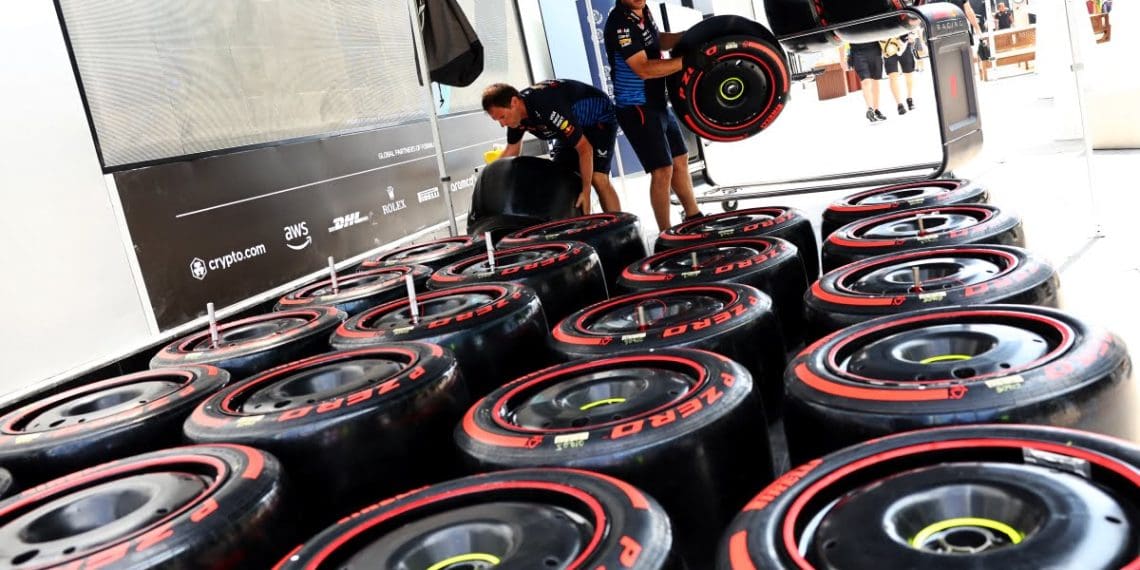Paddock Vibe – Red Bull Racing mechanics with Pirelli tires. March 6, 2024. Formula 1 World Championship, Stage 2, Saudi Arabian Grand Prix, Jeddah, Saudi Arabia, Preparation Day.
Formula 1 is set to continue using 18-inch tires as the sport undergoes a significant transformation in 2026, despite Pirelli’s opposition to a switch to 16 inches.
The last major technical regulations overhaul in 2022 saw F1 move from 13 to 18 inches to make the series more relevant to road cars.
A possible move to resize the wheels to 16 inches in 2026 was being considered to reduce the weight of the cars compared to the current generation, but Pirelli reportedly rejected this proposal. The tire manufacturer believes that this change could be seen as a step backwards in terms of technology transfer. Additionally, Pirelli was hesitant due to the extensive production required to manufacture new tires for a testing program.
According to Autosport, the outcome of a recent meeting of the technical advisory committee, where teams and the FIA discussed the 2026 rules, indicated that the 18-inch tires are likely to be kept. However, modifications to the size and shape of the tires are expected.
“We are approaching the final version of the sizes,” said Pirelli’s F1 boss Mario Isola to Autosport. “When designing the wheel, you need to consider the whole package, including brakes, wheel, suspension, and tire. I believe we are close to finalizing the sizes.
“We have to make changes because the new car is different and we have to design a smaller tire anyway. The discussion revolves around 16 and 18 inch tires. Our preference is to keep the 18 inch tires, but slightly smaller in diameter, with a slightly lower profile and a slightly narrower tire.”
Concerns about the weight of the cars have been a hot topic among drivers in recent seasons, leading the FIA to focus on making the next generation of machines lighter and more compact. However, Pirelli has refused to support a change that would help in this endeavor. According to Isola, the transition to 16 inch wheels would not have a significant impact.
Isola explained that weight is a crucial factor that affects the overall performance of cars, including the wheels. While there is a difference between 16 and 18 inch wheels, as well as narrower 18 inch wheels, it is not substantial. Therefore, weight plays a role, but is not the only determining factor. Performance is also an important consideration.
Switching to 16 inch tires, which are much smaller in diameter, would pose a greater risk of overheating. The reduced size of the tires would alter how heat is dispersed. Consequently, there are multiple factors to consider when designing a tire that meets the drivers’ expectations. In terms of performance, the 18 inch tire is superior to the 16 inch option.










